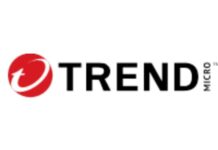India’s workforce surveillance has evolved a long way. From the age of physical punch cards to present AI-powered systems that analyze employee performance in real time, this change indicates changing business needs, the increasing digital infrastructure, and the growing relevance of data-driven decision-making.
The Analog Age: Registers, Punch Cards, and Human Supervision
Before digital tools were introduced, workforce monitoring in India was a largely manual process.
Physical registers were used for attendance and timekeeping from the early 20th century through the 1980s. Supervisors manually double-checked the records as employees had to sign in and out. Punch card systems were put in some public service offices and manufacturing plants whereby workers put a card into a machine that stamped their entrance and exit time.
Though basic and inexpensive, these systems suffered considerable constraints. Frequent was human error. Managers could fiddle with timesheets, staff could “buddy punch” for absent coworkers, and it was challenging to maintain uniformity throughout big companies.
Organizations could not get patterns insights from staff behavior because of the absence of data. Instead of being proactive, monitoring was reactive. Most of all, it was about guaranteeing presence rather than scrutinizing productivity.
The Digital Shift: Biometrics and On-Premise Software
India opened itself to IT reforms and digitalization in the 1990s and early 2000s, therefore causing major changes. Organizations started moving from paper records to digital systems.
The implementation of biometric attendance systems was one big innovation during this period.
These used fingerprint or retina scans to verify employee presence. The technology reduced fraud, improved accuracy, and offered a more tamper-proof method of tracking attendance.
Alongside this, organizations adopted on-premise HR and workforce management software. Businesses could efficiently store and access staff data using these platforms. Exporting time logs into payroll systems could alleviate HR department stress and better salary distribution accuracy by reducing their work volume.
However, these solutions were still limited by infrastructure. They required server maintenance, had limited accessibility, and did not offer real-time tracking. Their capabilities were centered around recordkeeping rather than performance analysis.
Still, this period marked a pivotal shift, from mere time tracking to structured workforce data management. Monitoring was no longer only about presence but also about hours worked, leaves taken, and overtime trends.
The Mobile and Cloud Era: Real-Time Tracking and Remote Workforce Management
India’s employee monitoring jumped once again in the 2010s with the advent of mobile technology and cloud computing.
Companies were no longer restricted to monitoring employees within office premises. Using mobile applications and cloud-based dashboards, they could track field staff, distant teams, and even freelancers.
Especially valuable for logistics, sales, and service sectors, GPS-based location monitoring enabled managers to precisely know where an employee was during work hours. Geofencing guaranteed that workers could log attendance only from specified areas.
The attendance systems evolved into multi-featured platforms including leave management, performance tracking, task assignments, and productivity analytics. Data was suitable for companies with dispersed teams, since it was stored on the cloud and therefore could be accessed from anywhere.
More importantly, this time also marks a change in employee expectations. Monitoring software had to find a middle ground between control and privacy as remote working and hybrid systems gained popularity particularly after the pandemic.
Ethical use, data security, and transparency became key issues. Businesses had to exercise caution not to over-monitor or seem invasive, as this might lower staff morale.
The AI-Powered Future: Predictive Analytics and Smart Insights
Artificial intelligence and predictive analytics are driving another shift in India’s approach to monitoring workers today.
Modern systems serve to forecast employee behavior, find patterns, and suggest measures in addition to just tracking. Today, AI can use analysis of workload, screen time, and project schedules to assist in the identification of workers at burnout risk. It can suggest optimal break times, track engagement levels, and even predict attrition risks.
This level of monitoring moves beyond surface metrics. It considers goal development, communication patterns, and performance measurements to provide a full picture of team and individual operation. Managers have to make more thoughtful judgments here not just about individual performance but also about organization workflow and resource distribution.
AI also enhances fairness. Traditional systems sometimes allow bias to creep into evaluations, but with machine learning models analyzing vast amounts of performance data, assessments can be more objective and data-driven.
That said, challenges remain. Ethical concerns around data privacy, surveillance anxiety among employees, and the need for clear boundaries must be addressed. Monitoring should empower rather than control, providing feedback loops and helping teams thrive in a more data-intelligent work culture.
Conclusion
More than just technological progress, the development of workforce monitoring in India parallels a fundamental change in our perspective of work, trust, and productivity. Once the concentration was only on monitoring who came in and out, it is now more on knowing how employees operate, what influences their performance, and how to better assist them. The secret will be in balance as we advance, so using wise technology sensibly while encouraging an attitude of openness and cooperation will be important. Proper workforce monitoring is not micromanagement; it’s the establishment of environments where people can produce their best work wherever they are.
The path from punch cards to predictive AI for India is a human tale as much as a technological one. And in that journey, the focus must always remain on people.
Udit Agarwal, CEO of TrackOlap, explains the value of digital transformation. When it comes to workforce management, technological progress and automation can facilitate businesses by empowering them to improve attentiveness and operational efficiency.

















